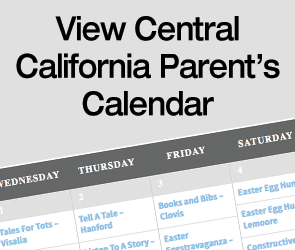Teach your children the joys of a Thankful Heart

By Jan Pierce
One of my favorite childhood stories is Laura Ingalls Wilder’s account of the Christmas when Mr. Edwards braved a snowstorm to bring gifts to the family. He had sweet potatoes for Ma in one pocket, and gifts for Laura and Mary in another—a tin cup for each of them, plus a penny and a peppermint stick. The girls were thrilled. Would our children be content with such simple gifts today? Not likely. It’s a challenge to raise thankful children in our consumer-driven culture, but it’s a challenge we can meet. We can train our children in the fine art of having enough.
Plant the Seeds:
Teach your values
Agree on the values you wish to teach your children and encourage them in everyday living—in work and play and how you spend your time. Those lessons begin in the nursery and continue to adulthood. In the book Just Moms, Conveying Justice in an Unjust World, Marta Oti Sears writes about a project her seven year old daughter took on one Christmas. The year before, she’d participated in a project to give a farm animal to a needy community overseas but this year, said her daughter, “I want to give the whole farm!” The whole farm was a group of animals costing in excess of $2000. Marta outlines her family’s journey through, “Can we really do it?” to “Yes, we did it with the help of friends and family.” You can bet the family had planted those seeds in their daughter’s heart at an early age and as a result they’ll all treasure the memory forever.
Water the Seeds:
Tell your stories
Most of us have stories from our family’s history documenting a much simpler lifestyle. My father received only one gift his entire childhood. It was a sled made by his father. His was a North Dakota farm family working hard to make a simple living, and gifts were not expected. Knowing his father took the time to make the sled for him made it more than special.
When my own children had questions about the concepts of rich and poor we came up with a saying that covered our philosophy of family life. It was, “We’re rich in love.” The children knew we gave gifts to those less fortunate. They knew we had enough to share with others in times of need. The message they received was the truth––we had all we needed and enough left over to be generous. We were content. What true stories of simpler times do you have to share with your kids?
Feed and Prune:
Model a thankful lifestyle
Children may learn by hearing stories, but they’ll take to heart the things they see with their own eyes and actually experience. Have a family meeting and talk about the choices you make. Explain why you make certain purchases, what you give to others and why you shop for bargains. Why do you choose certain family activities and not others? When do you refrain from spending? Does fun always require spending a lot of money? Are there opportunities for your family to give time or money to help others? Model the decision-making process and include the children.
Reap the Reward:
A thankful family in action
The benefit of careful planting, watering and pruning is a healthy family with thankful children. You’ll have kids who understand life beyond their own wants and needs. A thankful heart doesn’t just happen, it’s taught over time. Living out the values of a thankful heart in day to day family life isn’t easy in our consumer-driven world. We have to say no to the want-more, have-more cycles so many families embrace. But we can do it, because it’s the right thing to do. So go ahead and plant, water, feed and prune. Your family will thrive when you teach them to have thankful hearts.
Projects for your family
• Allow children to do chores to earn money for the purpose of giving to a worthy cause.
• Adopt a needy family through a local agency and meet their holiday needs.
• Work as a family to earn money to donate to a specific family-selected charity.
• Make the decision to sort through old clothing, toys and other possessions to “pare down” possessions and live with less.
• Take the entire family to a shelter or group home and help serve a meal.
• Choose to provide a snack or meal to a homeless person you pass on the roadways each day.
• Decide how to spend vacation time with an emphasis on enjoying one another without excess financial drain.
• Regularly plan family fun times including games, music, food, work projects and other inter-generational or extended family activities.
• At meal times make it a point to discuss the “fine art of having enough.” What does it look like in real life? What are the distinctions between wants and needs?
Central California Parent is the #1 FREE parenting resource for Central Valley families.
Stay connected with Central California Parent throughout the month!
• Like Us on Facebook
• Follow Us on Instagram
• Follow Us on Pinterest
• Follow Us on Twitter
• Subscribe For our Family E-Newsletter
• Read Our Digital Edition
• Enter for our FREE Giveaways








